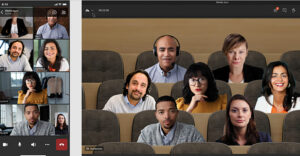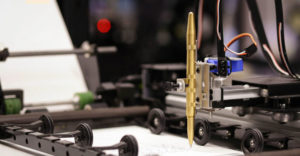
With Google’s announcement Thursday of the Body Browser, online mapping technology finally caught up with the medical crew of “Fantastic Voyage,” miniaturized in the 1966 sci-fi flick to enter a renowned scientist’s bloodstream and save his brain from a life-threatening blood clot.
A Chrome-OS driven online Gray’s Anatomy, Body Browser continues Google’s quest to map everything, now including the human body.
“Body Browser is a detailed, interactive 3D model,” Google representative Jason Freidenfelds told TechNewsWorld. “You can search, explore different layers of human anatomy, rotate, and zoom in on parts you’re interested in. Perhaps it’s analogous to the way geospatial imagery has made it easier to explore the world in engaging and informative ways.”
To view the publicly available demo at Google Labs, users will need a WebGL-enabled browser, “such as the just-updated version of Google Chrome Beta,” Freidenfelds explained. “WebGL is a standard that allows you to visualize complex 3D graphics in the browser without a plug-in.”
After visualizing it himself, Samieh Rizk, M.D., said Body Browser is “a fascinating tool.”
“As a facial plastic surgeon, I can see using Body Browser to educate patients,” said Rizk, who directs Manhattan Facial Plastic Surgery, and on his website offers a 3D tour of his office and surgical suite. “For example, when I explain to a patient that his nasal septum is deviated, or the smoker’s lines around a woman’s mouth are caused by the obicularis muscle contracting, I can show them, and they will get it.”
Shades of Gray’s
Three-dimensional anatomical imaging is critical in medical care, so its mainstream introduction via Google presents a familiar opportunity to healthcare professionals, who use similar tools to teach and evaluate.
Prior to medical or reconstructive procedures, plastic surgeons routinely evaluate patient anatomy in three dimensions, Rizk explained. “We can no longer just look at two-dimensional photos to efficiently design a surgical plan,” he told TechNewsWorld. “3D high-definition technology has become a vital component of my patient consultation and treatment decisions.”
Patient and caregiver education, in fact,has increasingly turned both interactive and online, said Eric Rackow, M.D., president and CEO of SeniorBridge, a home healthcare management company.
“We have a Skype program through which our social work and nurse care managers have video conferences with remote family members, such as a daughter caring for her father,” Rackow told TechNewsWorld. “Our online educational tools include a webinar series on patient care, and an iPhone/iPad application, Managing Complex Chronic Conditions, which helps assess people’s risk for hospitalization.”
Body Browser could become an important part of “training we offer our home health aides, as well as in conversations between nurse care managers and family,” Rackow explained. “The ability to make a conversation interactive allows us to more effectively engage people with a wide variety of learning styles and preferences.”
Google, however, did not create the Body Browser with any specific application in mind, Freidenfelds said. “As far as who it’s for — we can imagine many uses. Our motivation was to create an engaging demo of what modern browsers can do with 3D imagery, with no need for plug-ins.”
Med Ed
Body Browser “is like a basic anatomy course,” commented Rizk. “I wish I had this when I was in medical school. Medical students, in particular, are going to adopt Body Browser for studying and researching.”
Access to killer med ed apps aside, Rizk warns that “patients should not play doctor. Just because you can manipulate an image on a computer doesn’t make you a medical expert.”
The cautionary note strikes a chord with health policy expert Robert Goldberg, author of Tabloid Medicine: How the Internet is Being Used to Hijack Medical Science for Fear and Profit.
To people searching the Internet for medical advice and self-diagnosis, he warns, “Information from the Internet nearly killed my daughter. Twice.”
Although it’s “more toy than tool right now, Google’s Body Browser will tempt users to try to pinpoint if they have a medical problem using a one-size-fits-all image,” Goldberg told TechNewsWorld.
At the same time, however, “showing is always better than telling, and for educational purposes in the context of training or treatment, the Body Browser certainly could be beneficial,” he acknowledged.
“The average person has limited knowledge of their own body and how it actually works,” plastic surgeon Rizk added. “Body Browser is a killer app that has the power to change all that.”





















































